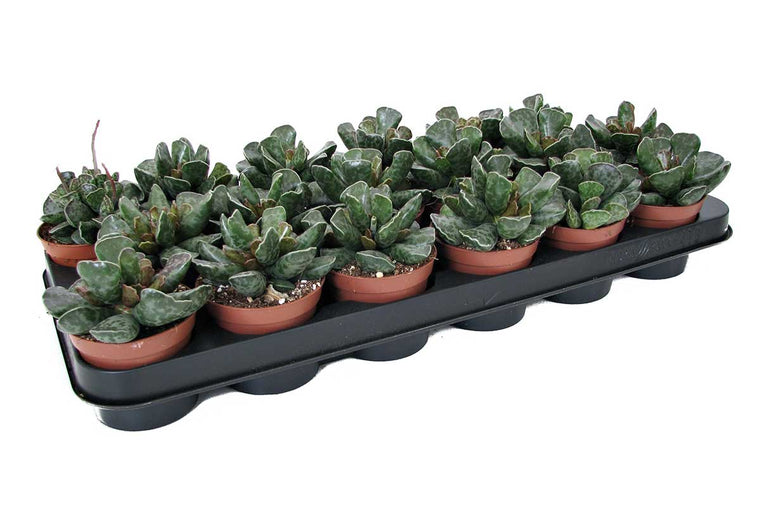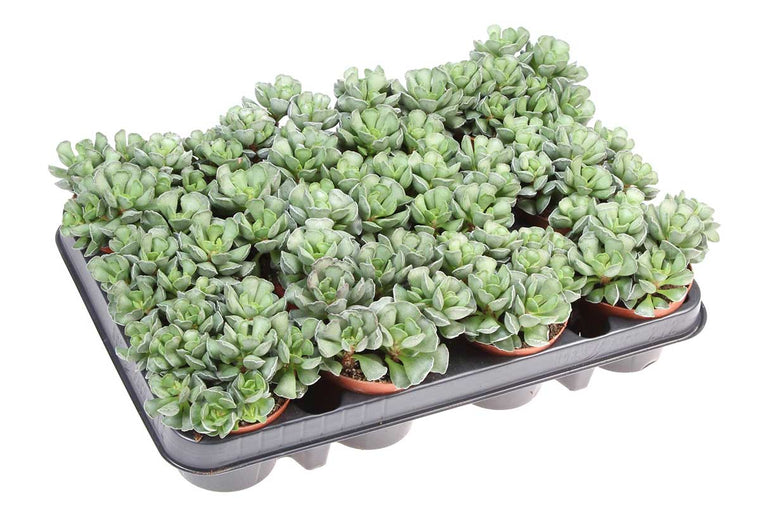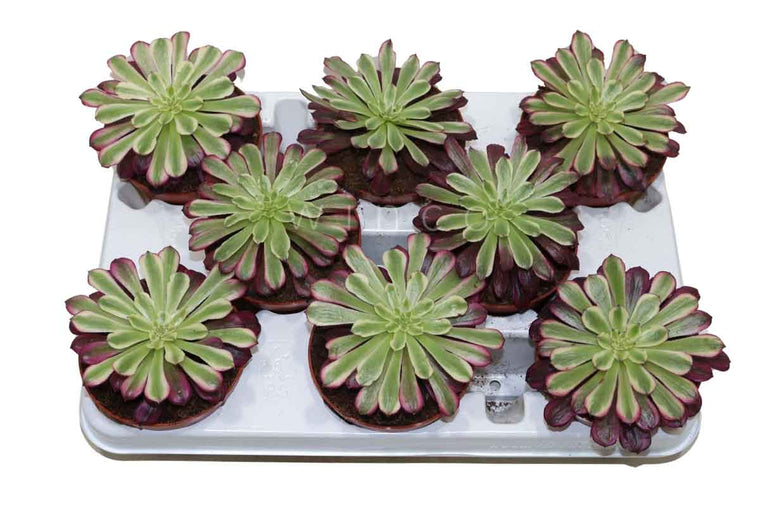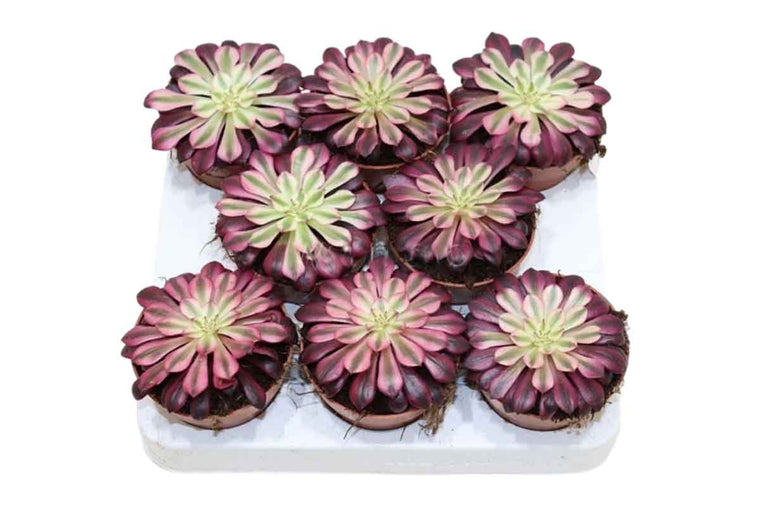Aeonium ‘sunburst’ 8.5cm
Λυπούμαστε, προσωρινά μη διαθέσιμο

Aeonium ‘sunburst’- Αιώνιο
Οικογένεια: Crassulaceae
Διάμετρος γλάστρας:8.5εκ., Ύψος:10εκ.
Πανέμορφη ποικιλία που σχηματίζει μεγάλες ροζέτες περίπου 15-20 cm και διακλαδίζεται με την πάροδο του χρόνου.
Τα γκριζοπράσινα φύλλα του είναι ποικιλόχρωμα με ροζ περιθώρια που εντείνονται και γίνονται σχεδόν κόκκινα, με την παρατεταμένη έκθεση στον άμεσο ήλιο.
Καθώς αυτό το φυτό μεγαλώνει, χάνει τα φύλλα της βάσης και ανακαλύπτει τον γκρίζο και λείο κορμό του.
Είναι ένα ξεχωριστό παχύφυτο για να δώσει μια νότα ζωντάνιας στα μπαλκόνια ή τα περβάζια των παραθύρων ή σε φυτικές συνθέσεις, καθώς ταιριάζει πολύ με άλλα παχύφυτα με πράσινα ή μπλε φύλλα.
Αν κάποιος δεν επιθυμεί το γυμνό αυτό βλαστό, μπορεί να τον κόψει 2-5 εκ κάτω από το τελευταίο φύλλο και να τον φυτεύσει σε νέα γλάστρα.
Χρειάζεται περισσότερο πότισμα από τα άλλα παχύφυτα, καθώς έχει σχετικά μικρό και ρηχό ριζικό σύστημα.
English
This beautiful succulent plant at the top of its stems forms large rosettes of about 15-20 cm and branches out over time.
Its gray-green leaves are variegated with yellow with pink margins that intensify, becoming almost red, with the prolonged exposure to the direct sun.
As this plant grows, it loses its basal leaves and discovers its gray and smooth trunk.
In summer, its star-shaped yellow flowers bloom, which are grouped in clusters on the long peduncles.
It is a perfect succulent plant to give a touch of liveliness to your balconies or window sills or in your exclusive plant compositions as it goes very well with other succulent plants with green or blue leaves.
Care
- It requires a lot of light all year long, however avoid direct sunlight especially during the hottest hours of the day.
- It is preferable to keep it at mild temperatures or over, but never below 5 °C, for this reason it is recommended to shelter it during the winter period.
- Water moderately but only when the soil is completely dry. Do so once every two weeks in spring and summer, reduce it to once every two months in autumn and winter.
- A well-draining soil is an optimal solution, even better if further enriched with inert materials such as pumice, sand or lapilli.
- They do not need frequent fertilization, it is sufficient to dilute the fertilizer with watering once a year.
Αποστολή
Με Courier










